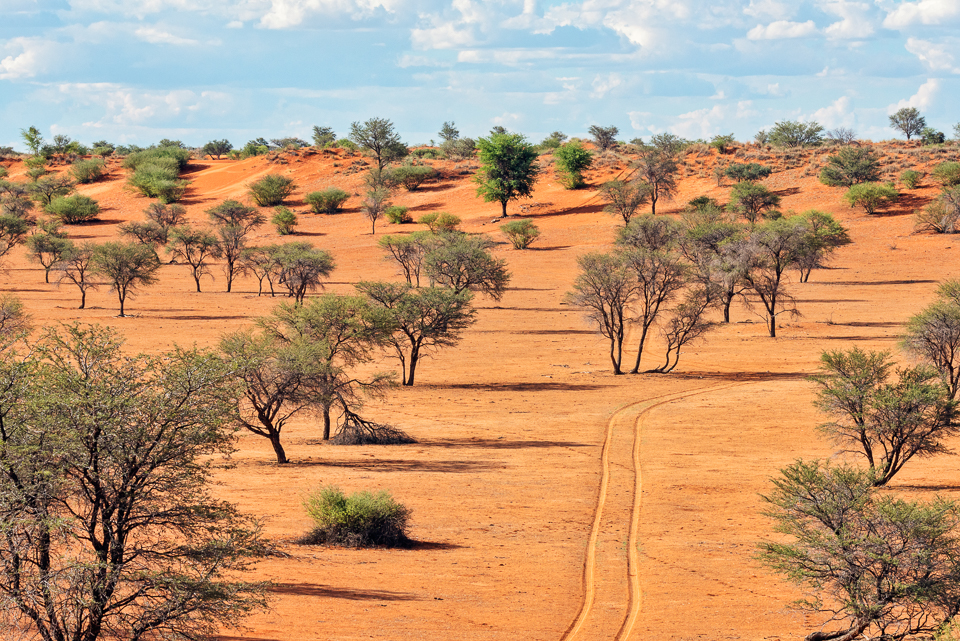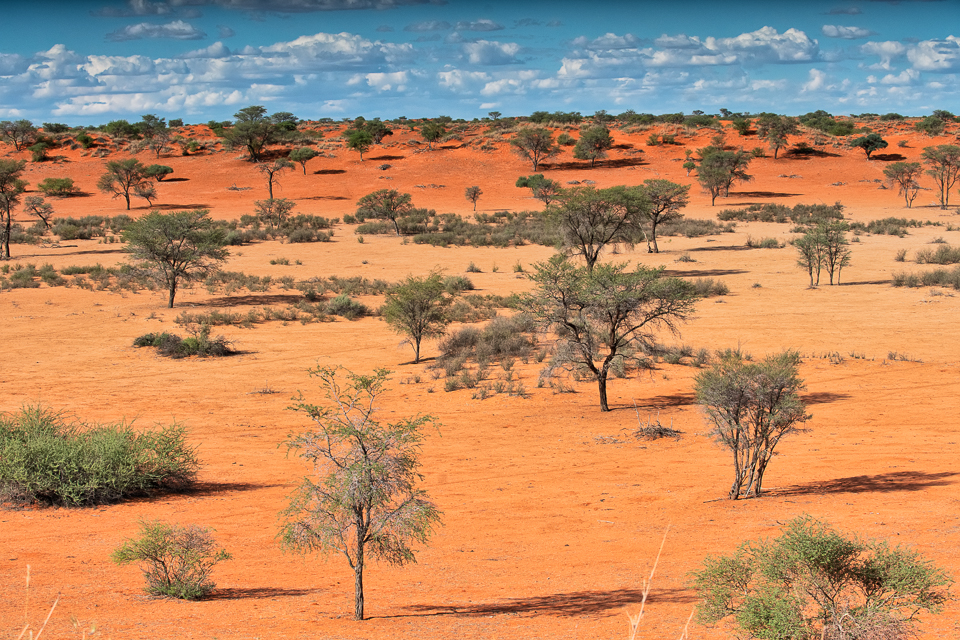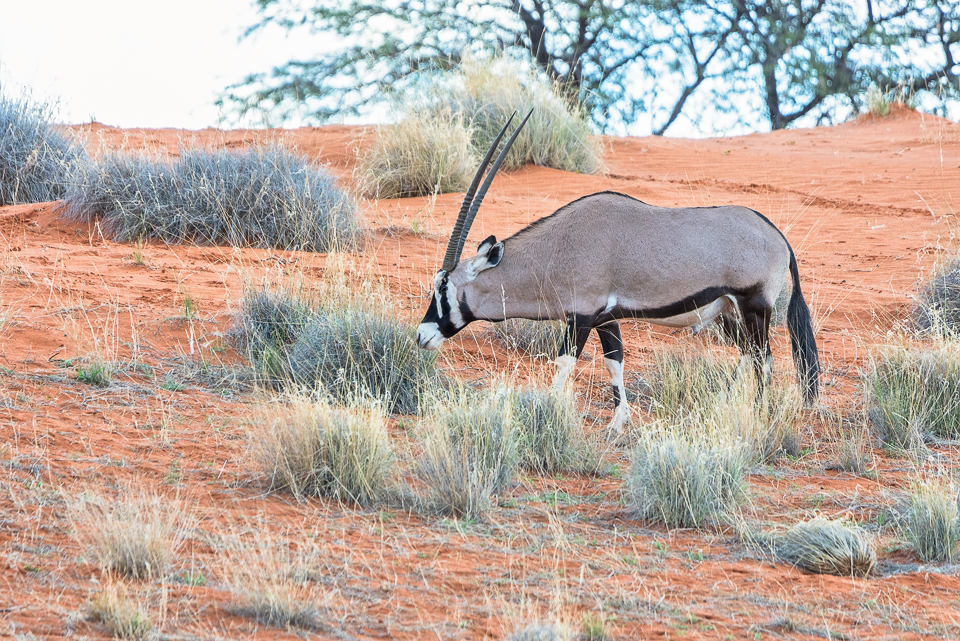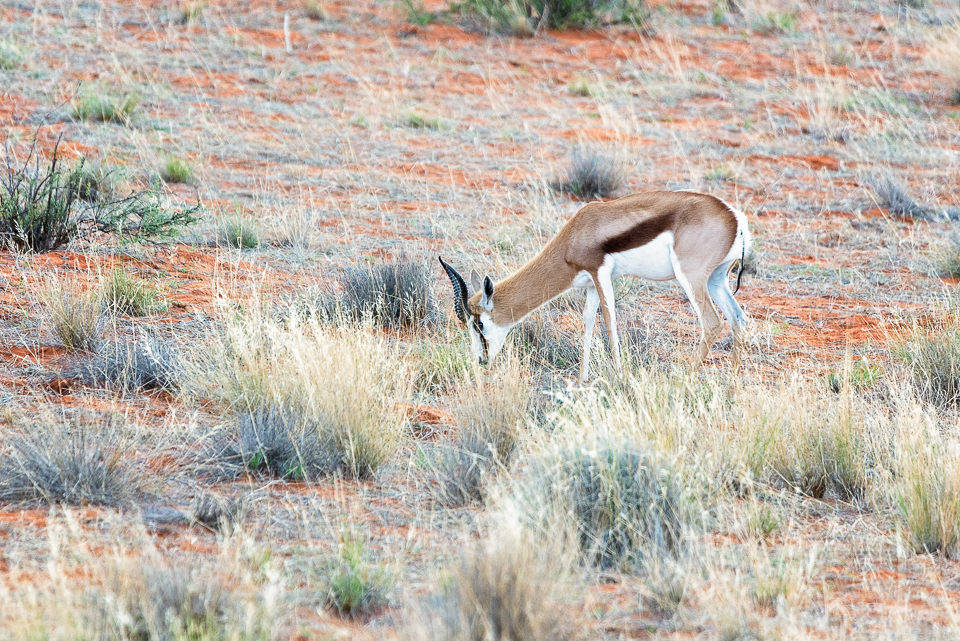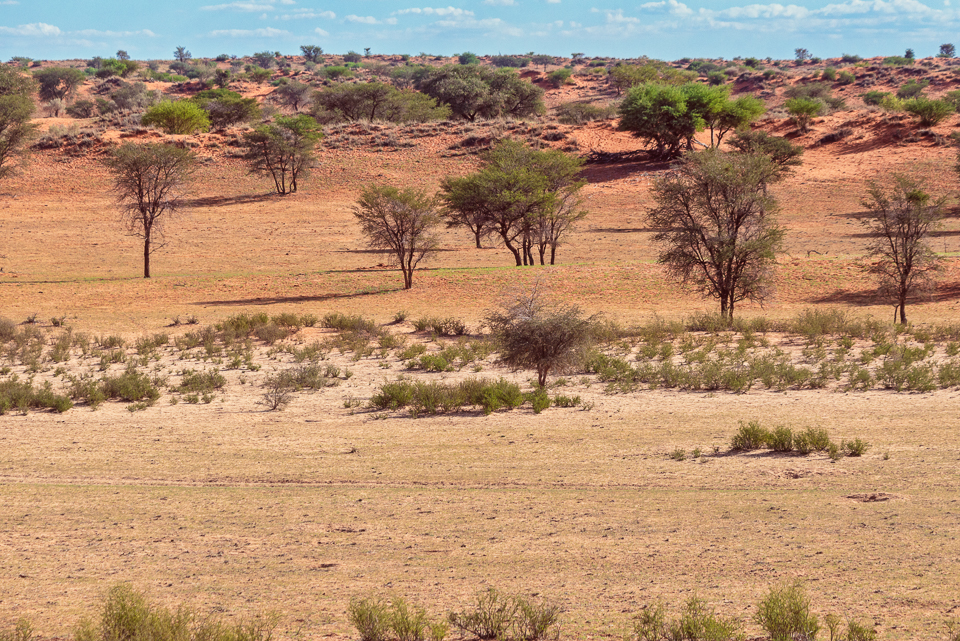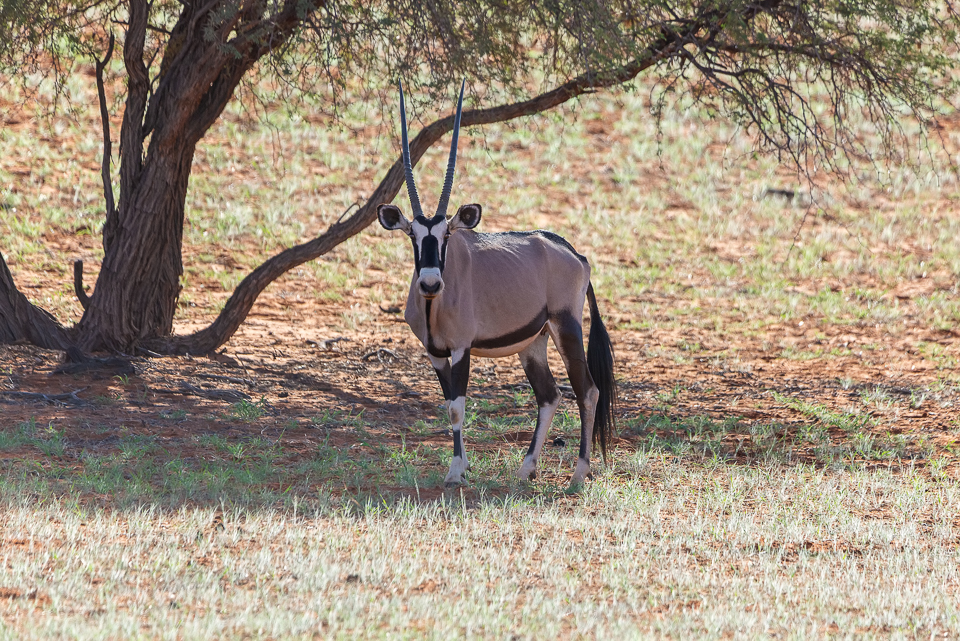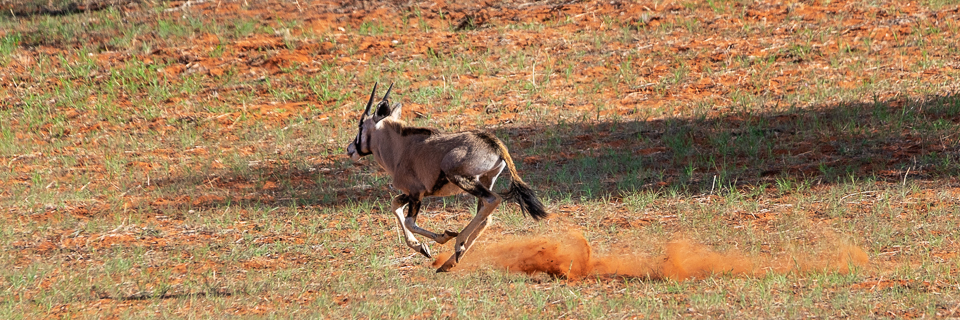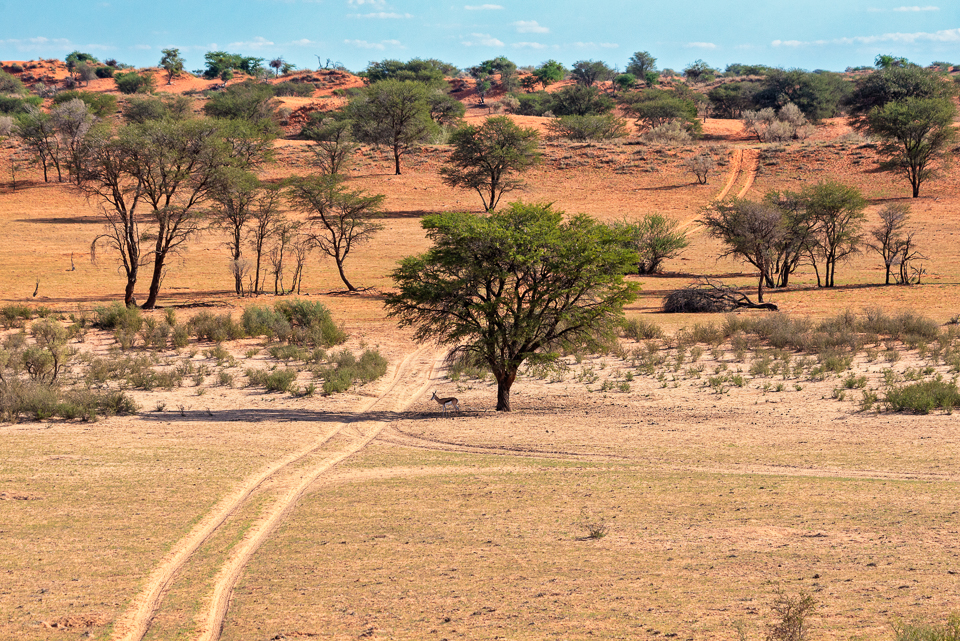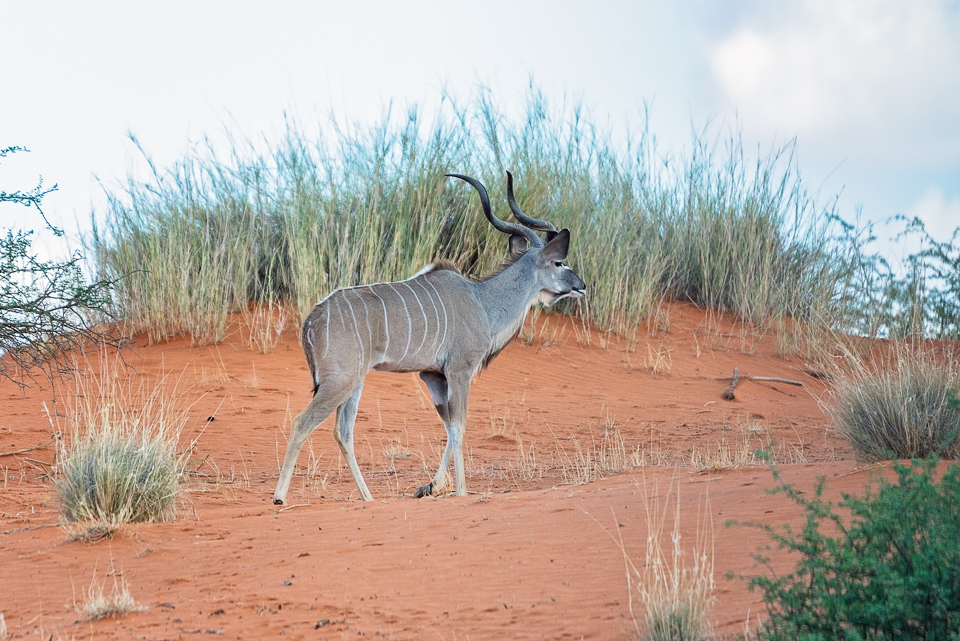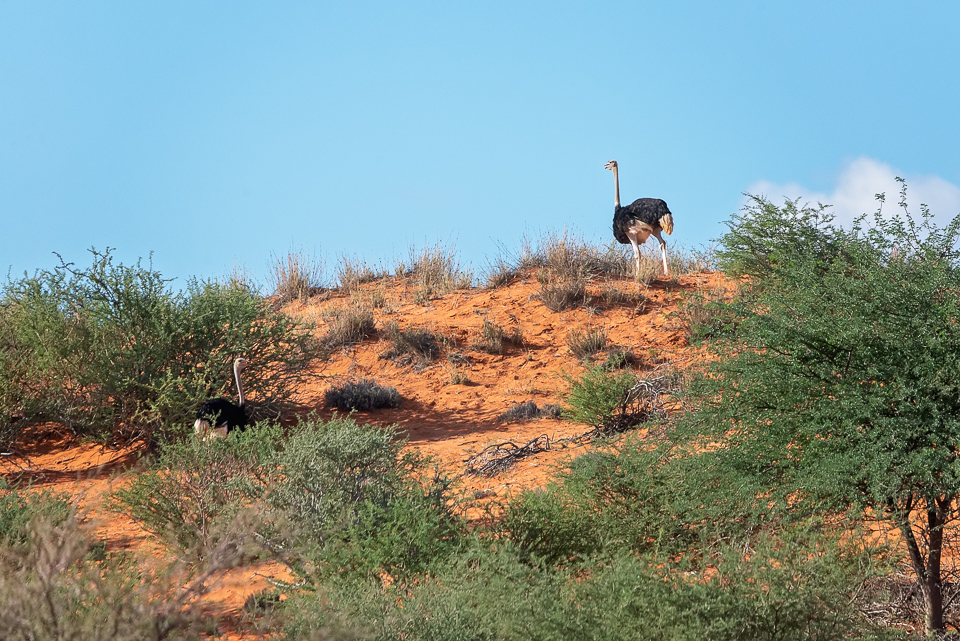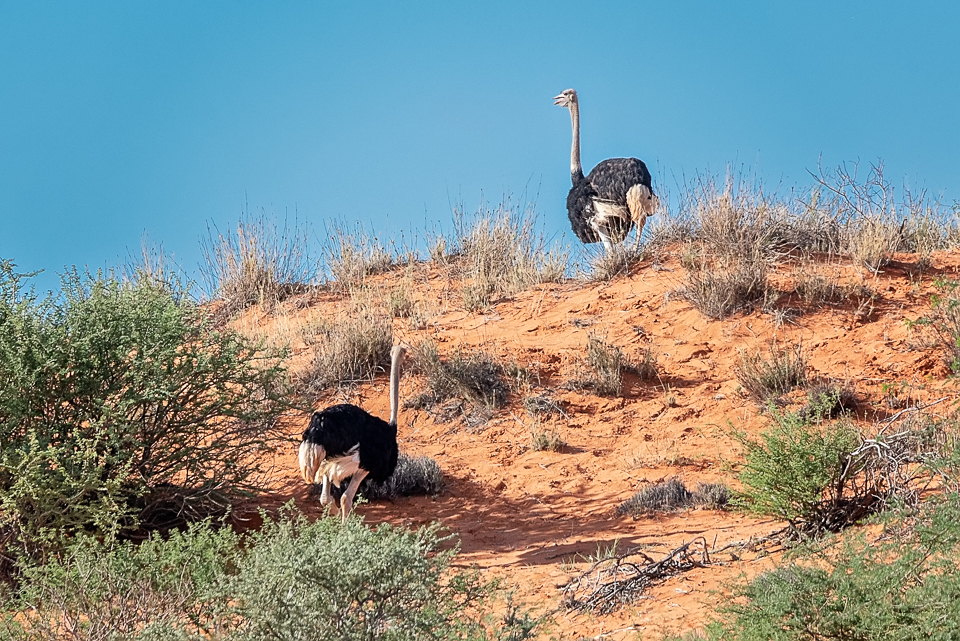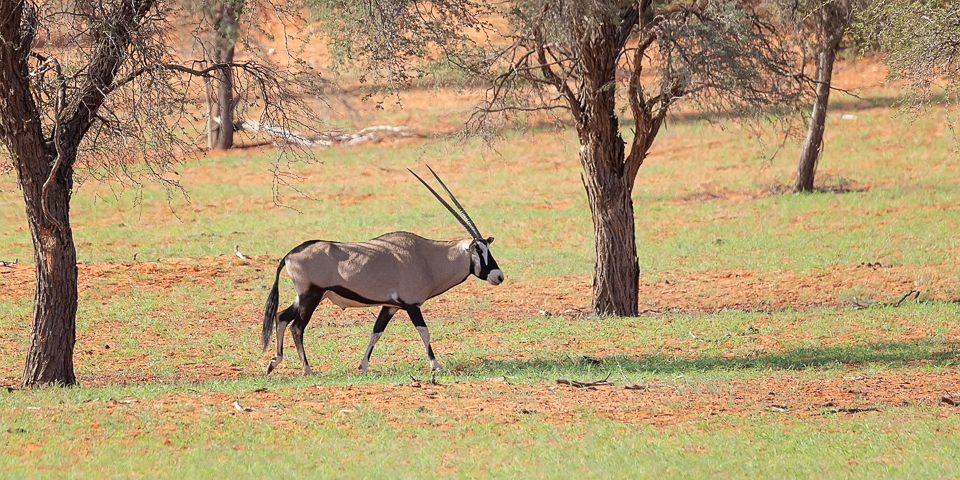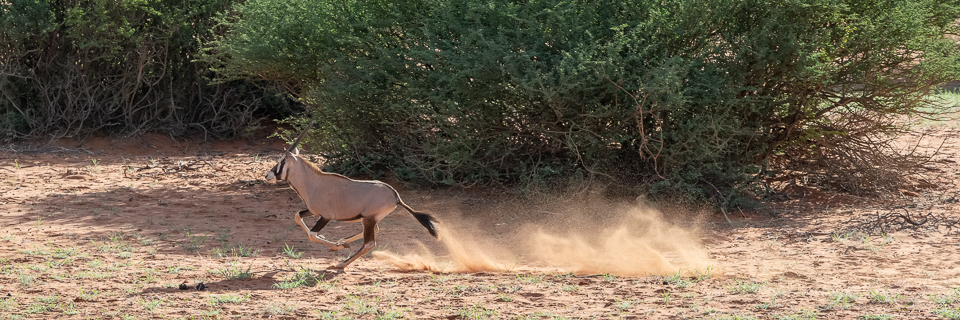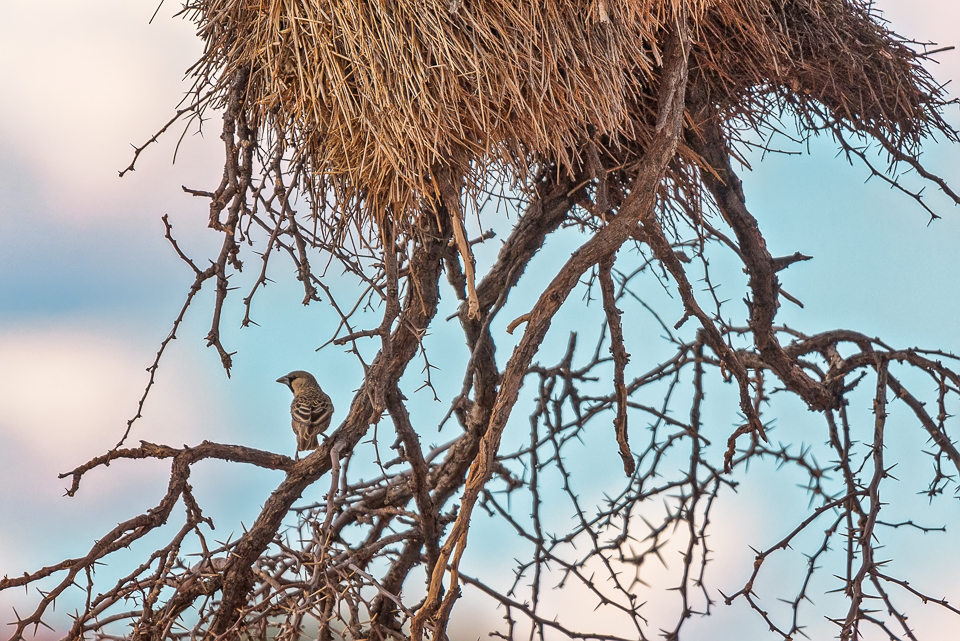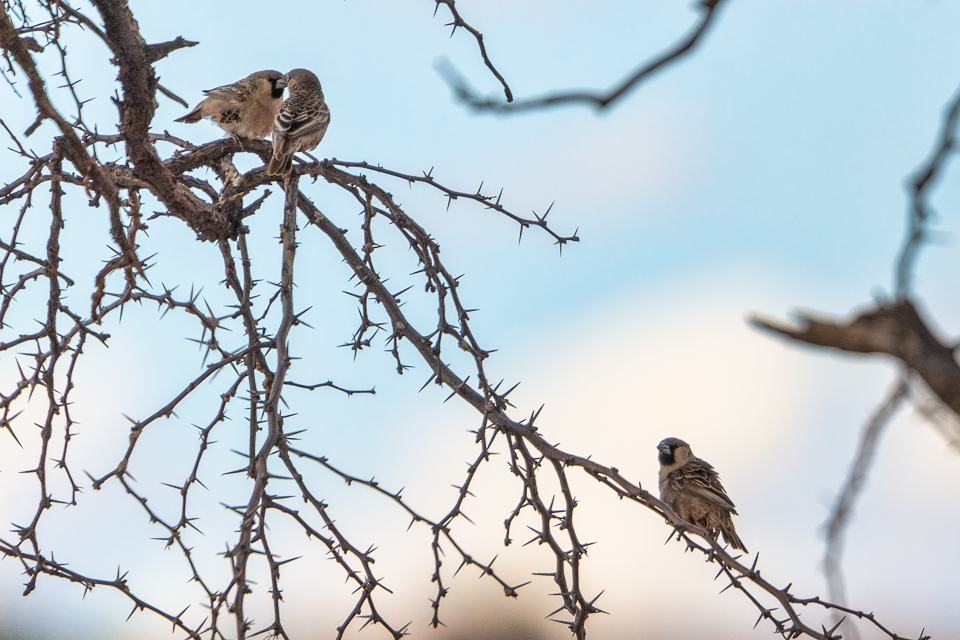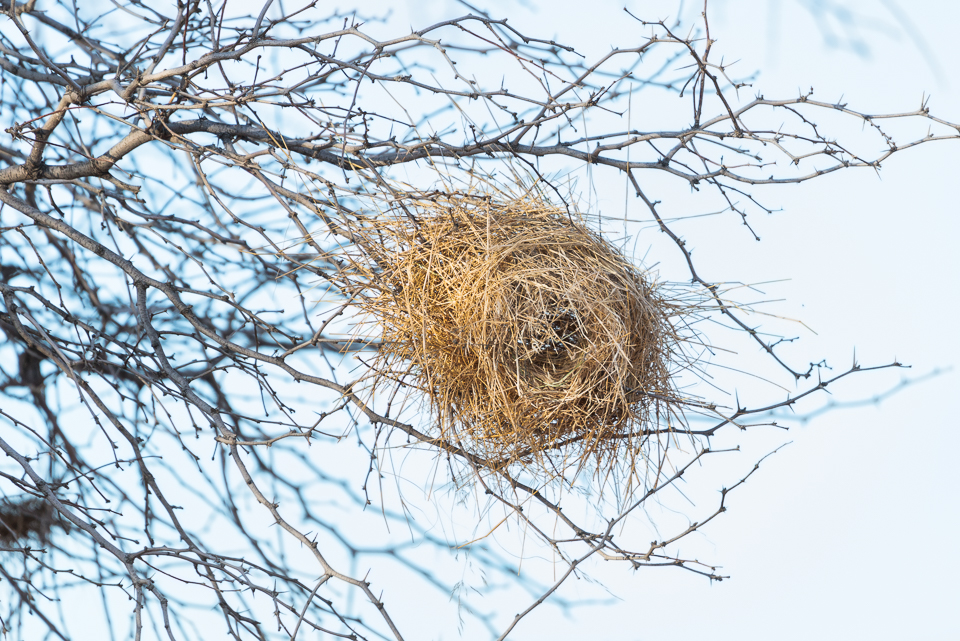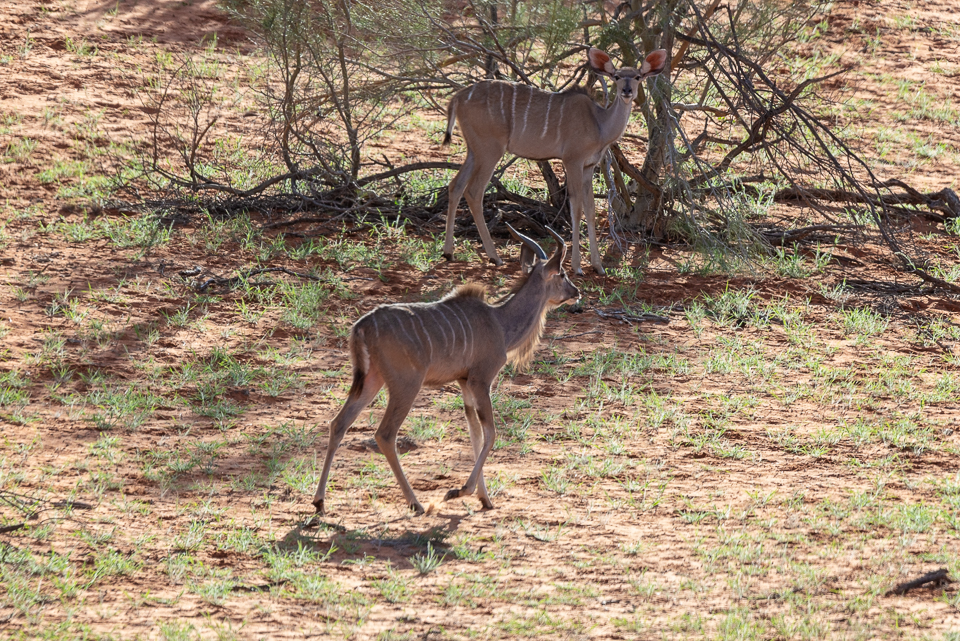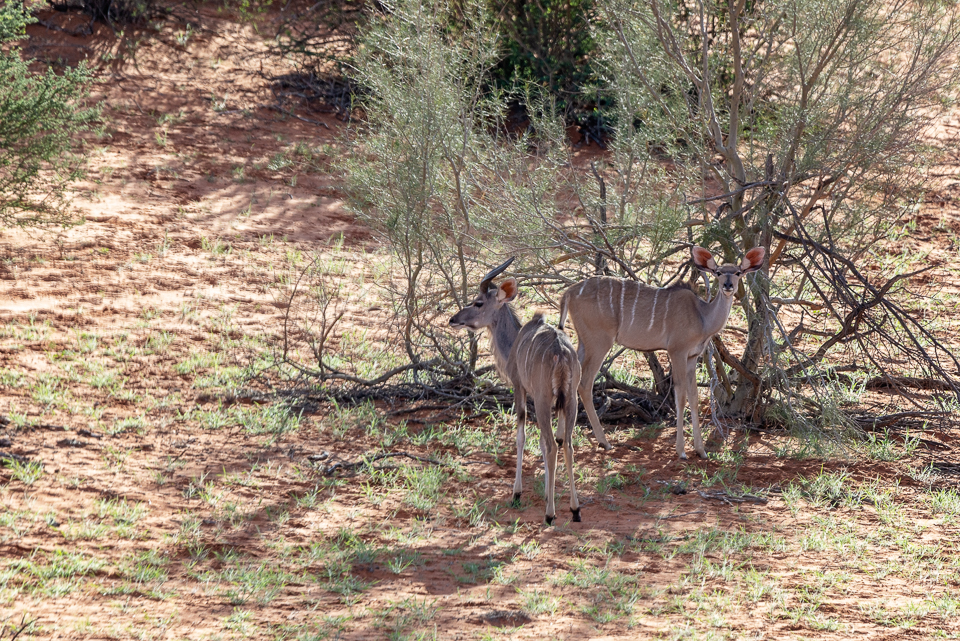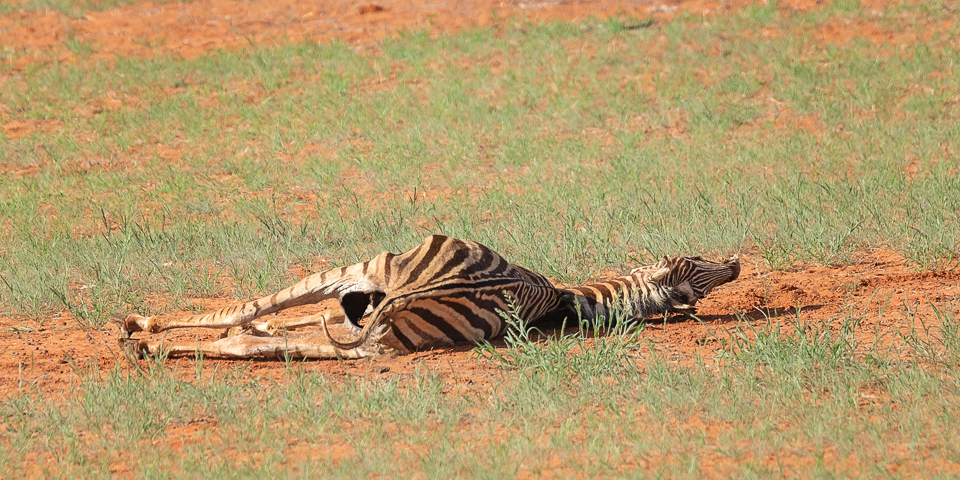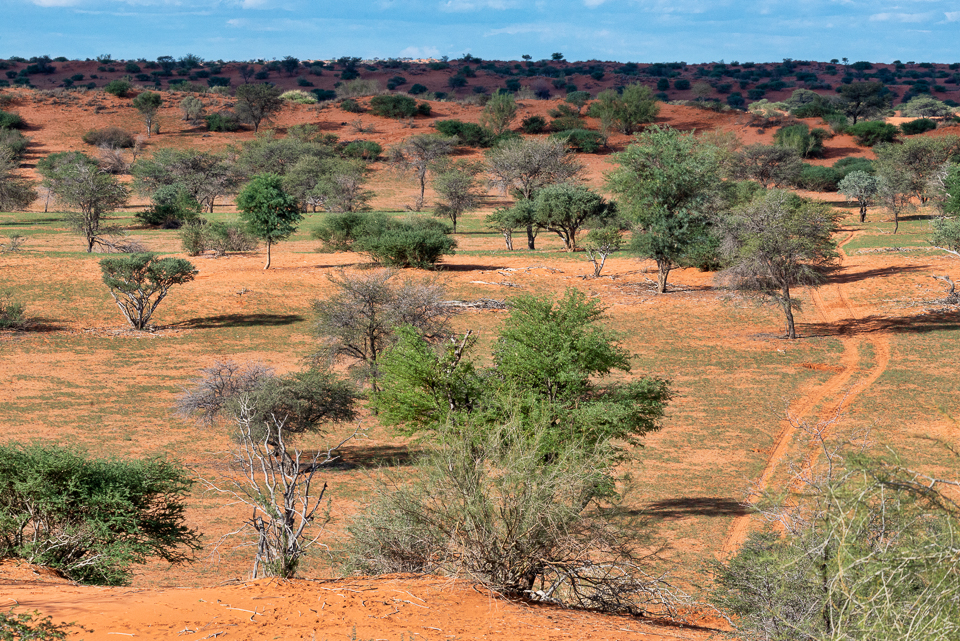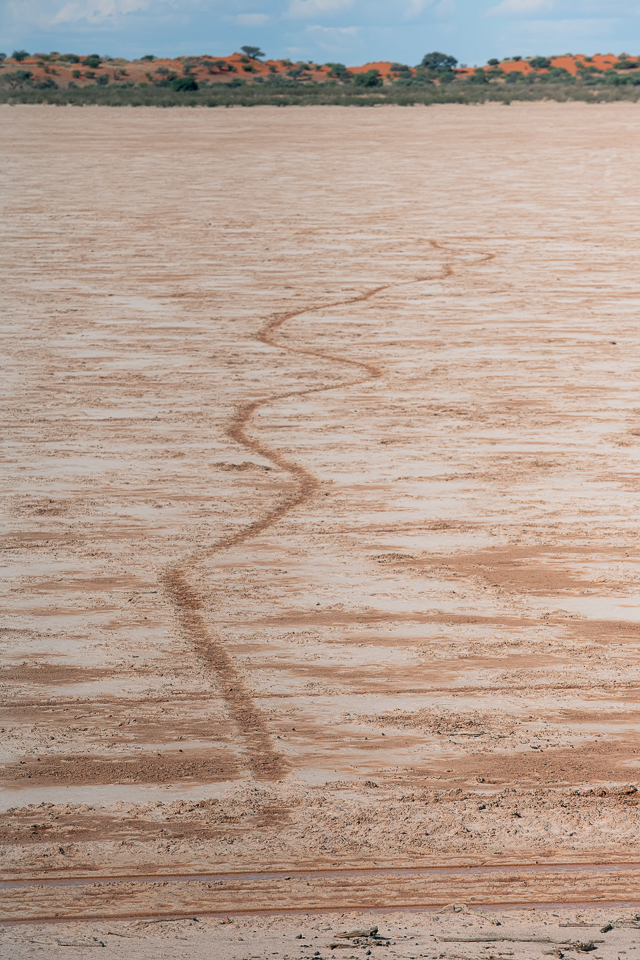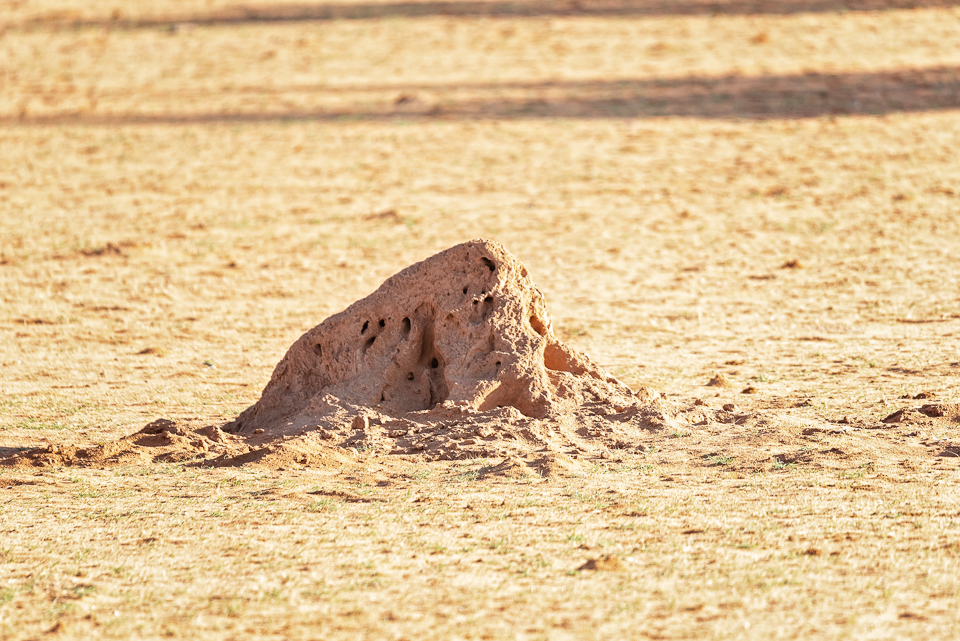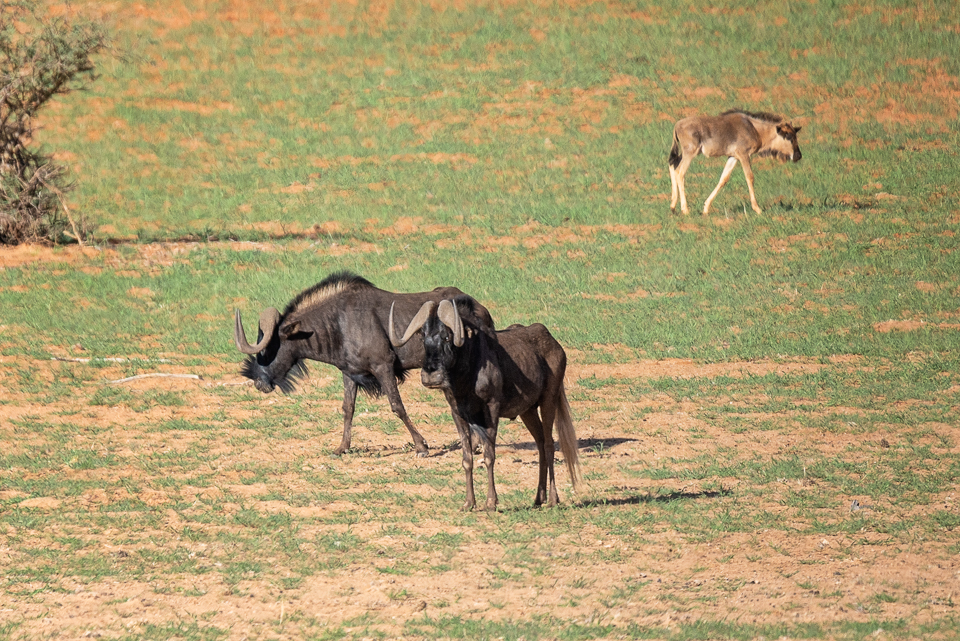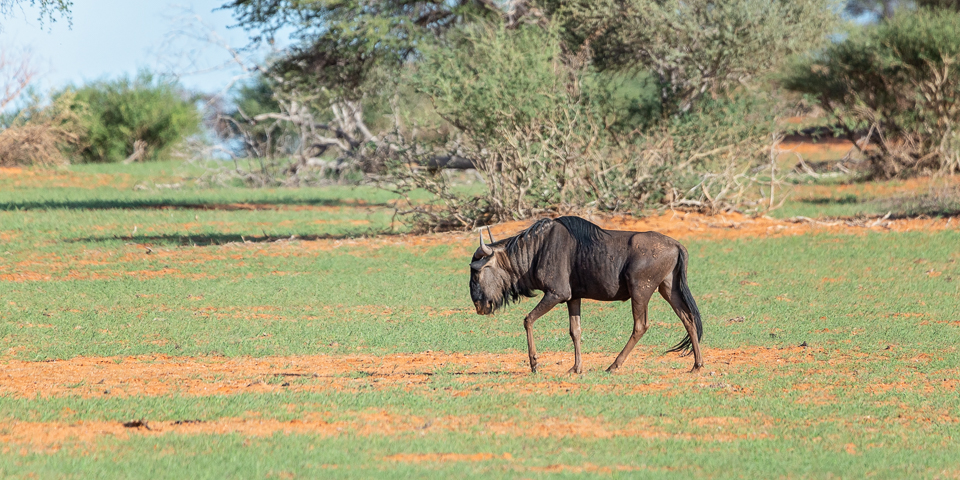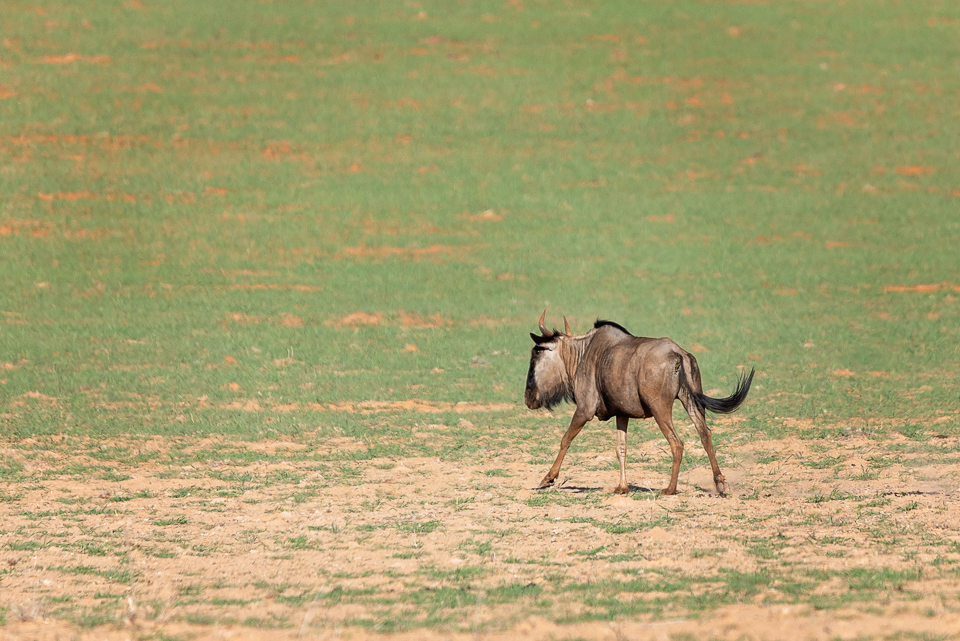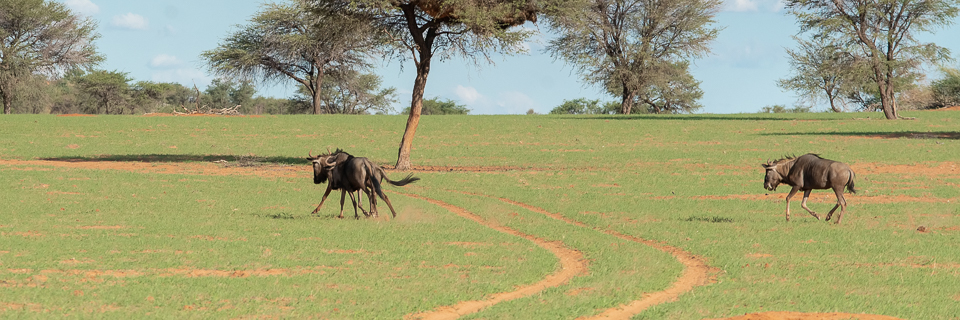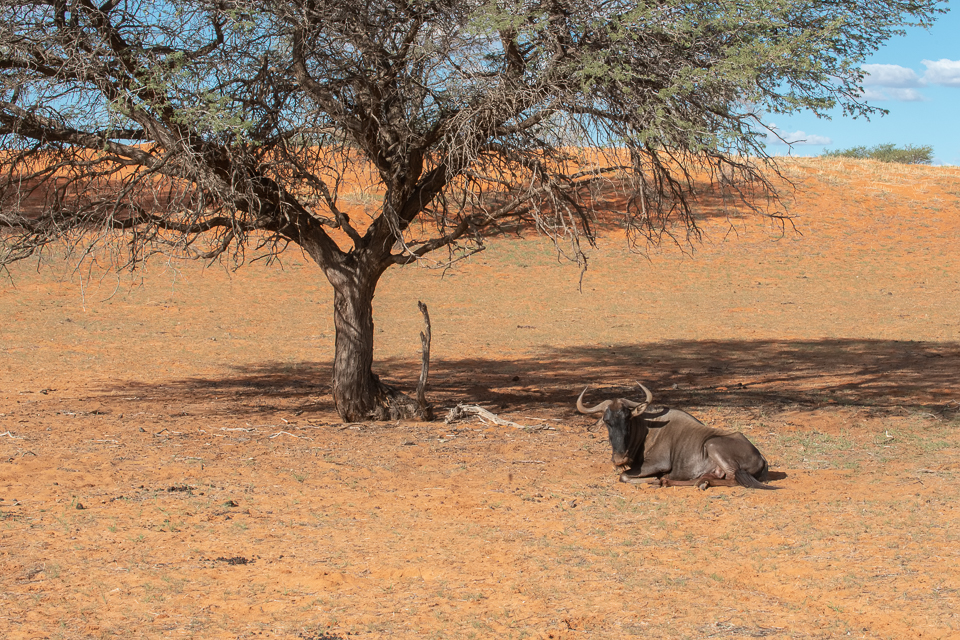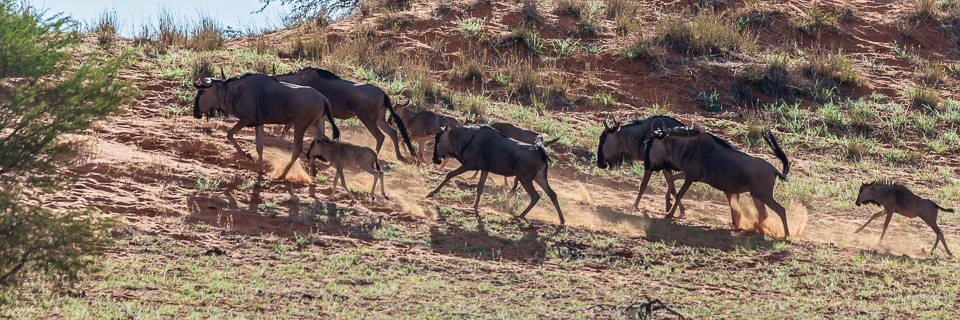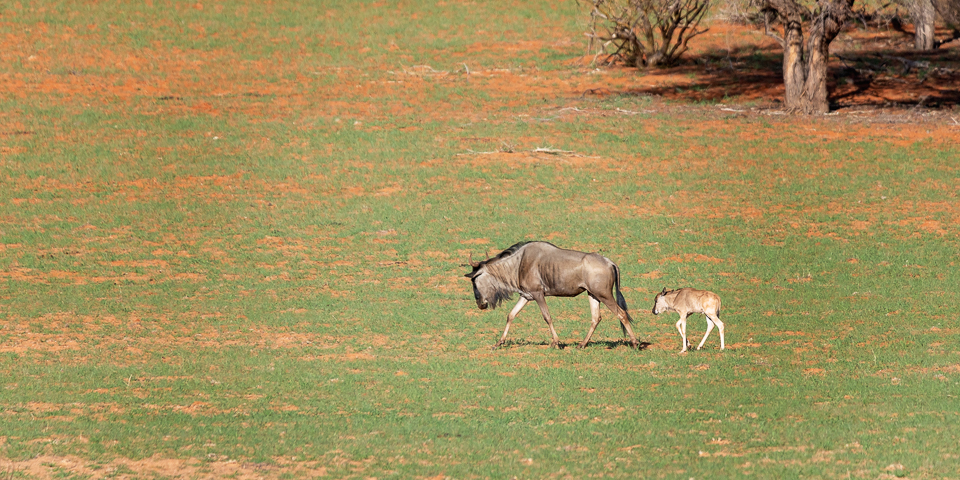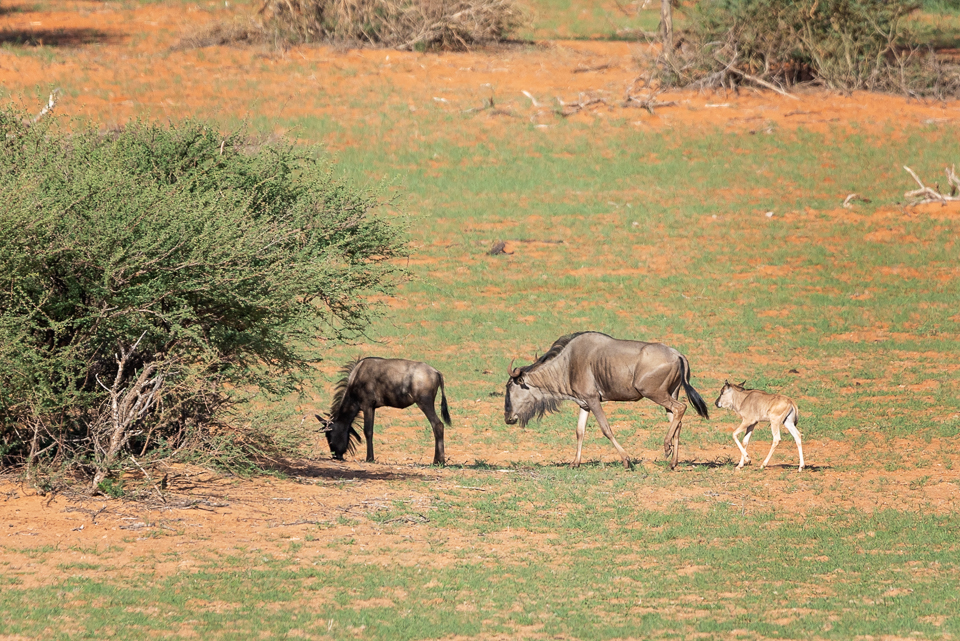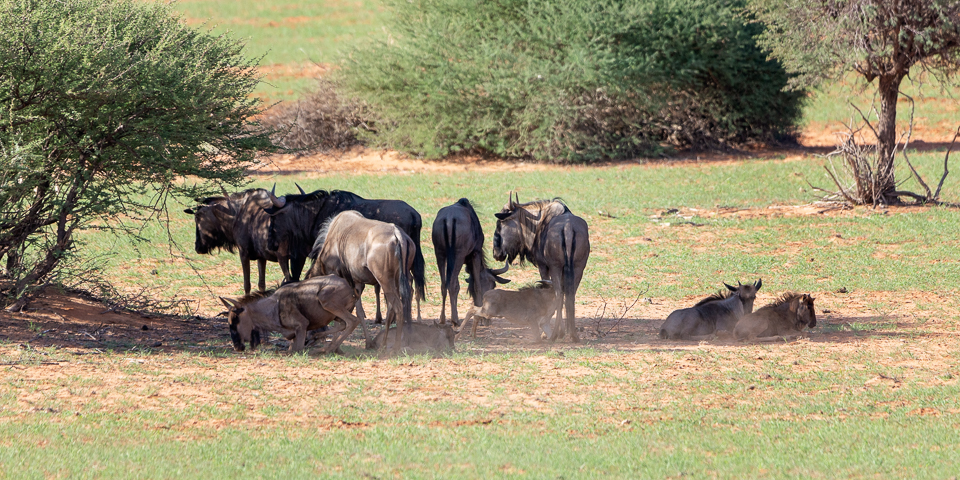Off we go for a rather long and breath-taking scenic drive. A couple of hours of driving through rolling dunes and changing landscapes and we start to understand why not-such-a-small lodge decided to call itself "bagatelle" (trifle). In comparison with the vastness and wilderness of Kalahari it seems to be small and of little consequence indeed.
In the afternoon light the dunes are so fiercely orange, and acacia trees so lush and green, that it seems unreal. But beautifully so.
Po południu ruszamy na dość długą i naprawdę fascynującą przejażdżkę po Kalahari. Tak mniej więcej po godzinie, może półtorej, zaczyna do nas docierać dlaczego nie mały przecież lodge nosi nazwę „Bagatelle”. W porównaniu ze skalą Kalahari, jego obszar to rzeczywiście bagatelna sprawa.
Krajobrazy są przepiękne. Są tak piękne, że można się tak gapić i gapić i paść własną duszę aż do wypęku. W popołudniowym słońcu pomarańcz jest tak intensywny a zieleń akacji tak soczysta, że aż wydaje się to trochę nierealne.
Every so often we encounter groups of various animals: oryx, springboks, ostriches, gnu and obviously social weavers.
When there is life, there is death, and thus occasionally we alse see a dead animal or (more often) a skeleton.
Co chwila napotykamy większe lub mniejsze grupy zwierząt: oryksy, skoczki antylopie, strusie, kudu i oczywiście gniazda tkaczy.
Tam, gdzie jest życie, nieodmiennie pojawia się także śmierć, wiec zdarza nam się też zauważyć martwe zwierzę lub sam jego szkielet.
On quite a few occasions we encounter wildebeest (gnu) and we can see both species: the black wildebeest (white-tailed gnu) and the blue wildebeest (brindled gnu).
You can distinguish black from blue wildebeest by the colour of their coats, as long as you can part with logic for a while: blue wildebeest is dark grey (ok, with a blueish sheen to the coat), it has stripes and black tail. Black wildebeest is brown with a cream colour tail – obviously.
You can also distinguish them by the orientation and curvature of their horns. Horns of the blue go out to the side, then curve down before curving back up. The blacks’ horns protrude forward then curve downward before curving back up.
The blue wildebeest is somewhat bigger of the two species.
Kilka razy napotykamy na grupki gnu – obydwa ich gatunki: brunatne i pręgowane. Gnu brunatne jest ciemnobrunatne z kremowym chwostem ogona. Gnu pręgowane jest szare z pionowymi pręgami oraz ciemnym ogonem. (Po angielsku jest dużo zabawniej: gnu szare z pręgami nazywa się niebieskie, natomiast gnu w kolorze brunatnym i z jasnym ogonem nazywa się czarne - nie pytajcie mnie, co pili ci, którzy nadawali im nazwy).
Te dwa gatunki gnu różnią się także kształtem rogów – rogi gnu pręgowanego wyrastają do boku i zakrzywiają się najpierw w dół, a następnie w górę. Rogi gnu brunatnego wyrastają bardziej do przodu, chociaż tez zakrzywiają się najpierw do dołu a następnie do góry.
Gnu pręgowane jest większe niż brunatne.

